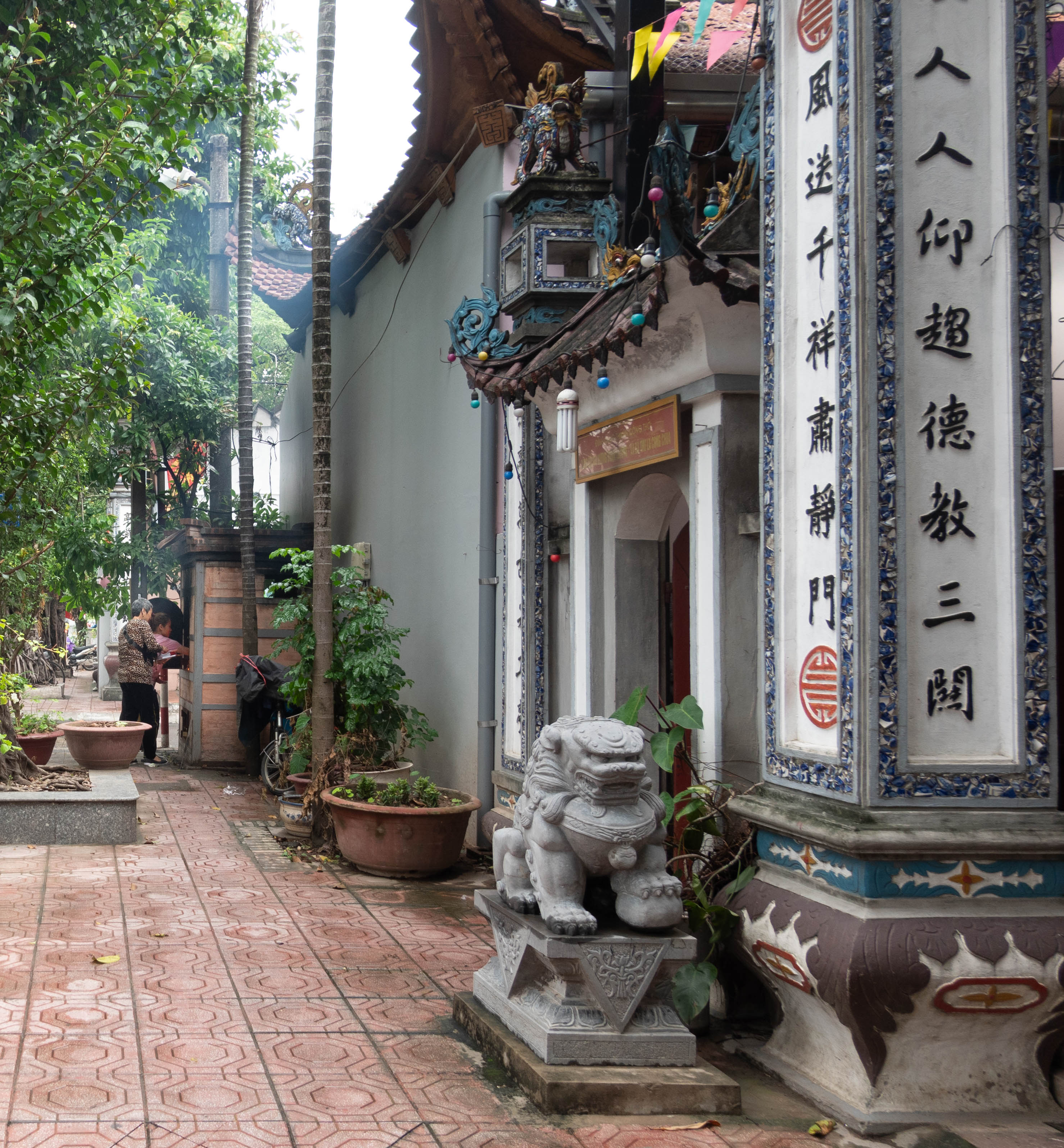Page 6
12/25/2023
Spirituality
No matter where in Vietnam you may decide to travel, among the many iconic odors you encounter drifting along the air currents is the subtle smell of burning or burnt paper.
Votive paper offerings are burnt daily for many different reasons. Some reasons are steeped in tradition and some in superstition. Common offerings I've seen are small (sometimes not so small) paper replicas of cars, jet planes, helicopters, cell phones, cigarette packages, houses, animals, clothing, gold coins, gold bars, and US currency. Burning these paper models is particularly popular during the Tet Holiday.
I've been told these votive offerings are burnt to bring wealth and prosperity to deceased loved ones, who are now in the spirit world, and also so they have money for living expenses, a way to travel, a place to live, and a way to communicate.
I've also been told that if your deceased loved ones receive these gifts they will be happy; and in return, they will bless you with good health, happiness, prosperity, and luck.
I've also been told that burning paper votive offerings makes you feel closer to your deceased loved ones.
Finally, I've been told that if you burn paper votive offerings, you will receive similar material goods while you are living.
Paper votive offerings are burnt on sidewalks, against stone walls, against concrete street gutters, and in furnaces of all sizes and shapes.

Burning of paper votive offerings should not to be confused with the practice of burning incense. Where smoke from burning of paper votive offerings carries the gift to the spirits in the beyond, smoke from burning incense carries prayers, wishes, thoughts, and requests to the spirit world.
Burning incense is believe to be a bridge between those living on earth and those living in the spirit world. More notably incense burning is closely aligned with ancestor worship; however, it is not restricted to ancestor worship.
The Vietnamese also believe that spirits can occupy various plants, inanimate objects, or animals.
In Hanoi, I've been told that spirits of all types live in the many banyan trees that adorn the streets of the older sections of the city. These spirits, it is believed, are very powerful and they must not be angered; as they are there to watch over and protect the inhabitants of the neighborhood.
Recently, a friend of mine wished to sell his rental house. Although it was a desirable house, located in a desirable part of town, and reasonably priced, it had been on the market for several weeks with no inquiries.
One day he noticed that a branch from the banyan tree in front of the house had grown over the roof of his house and needed to be trimmed back, lest it become problematic as it grew bigger. He approached the neighborhood committee and asked them to cut the branch off the tree. They refused, stating it was not structurally necessary and did not pose a danger to pedestrians; therefore, they could not justify the expenditure.
Later that day as he was preparing to leave the neighborhood, he saw an elderly lady selling tea at her “trà đá” (tea iced) located across the street from his house. He walked across the street, sat down and ordered a glass of tea. As he was the only customer, the lady began chatting with him about the weather and how her business was slow, now that the weather had cooled down.
"Out of the blue", he said to me when retelling the story, “she said to me ‘Did you know, the spirit of a soldier from the war lives in that tree across the street? He is angry because people have forgotten him. I will make an offering later today so he will send people to my trà đá'."
My friend told me he did not really believe that spirits lived in trees, but the more he thought about it, the more he thought it would not hurt him to make an offering and ask that his house be sold.
The next day he arrived at the tree, placed fruit at the base of the tree, and began burning incense; asking for help in selling his house. While engaged in his offering he was approached by a man with a tree trimming saw. The man was a nearby neighbor who was trimming the tree in front of his own house and he asked my friend if he wanted him to “cut that branch on your tree while I have my ladder here?”. Of course my friend accepted the offer, but the man refused payment.
The house sold one week later.


NOVEMBER p.2, p.3, p.4, p.5, p.6, p.7
DECEMBER p.2, p.3, p.4, p.5 p.7